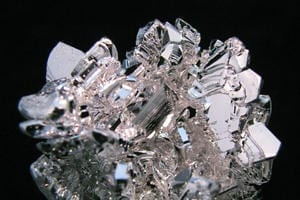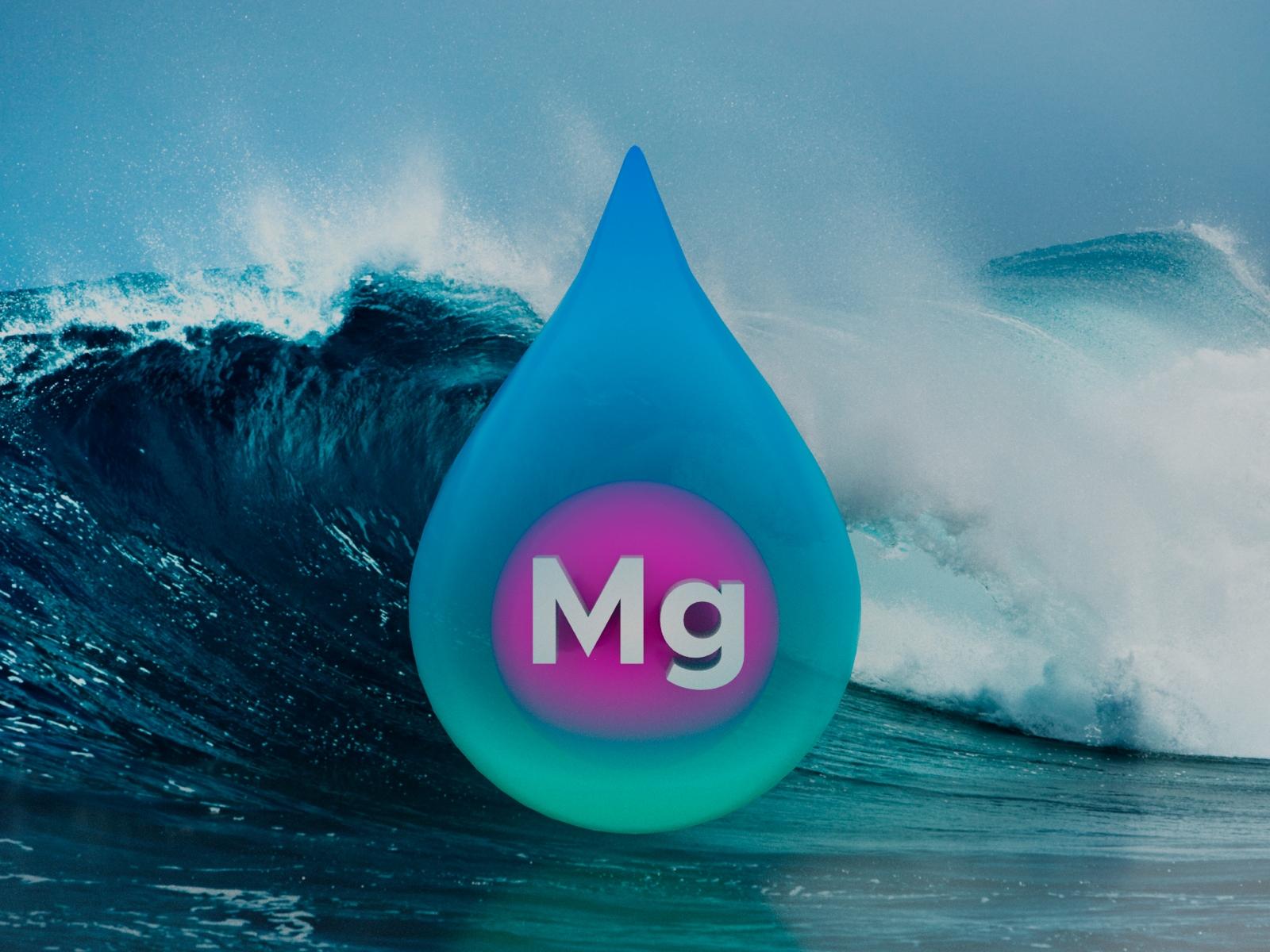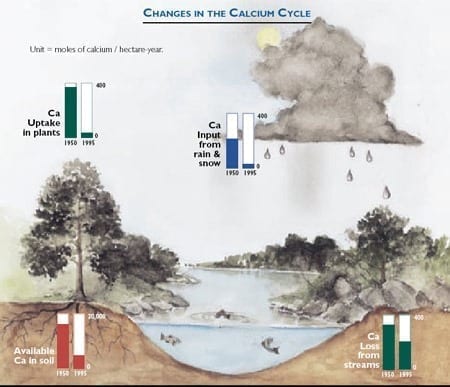
The process could ultimately make fuel-efficient transportation more affordable
A lightweight metal that reduces fuel use in cars and planes could be extracted from the ocean through a unique process being developed at the U.S. Dept. of Energy (DOE)’s Pacific Northwest National Laboratory (PNNL). The process could ultimately make fuel-efficient transportation more affordable and expand the American magnesium market.
PNNL is leading a $2.7 million, three-year project to develop a novel method that removes naturally occurring magnesium from seawater. The project was announced by DOE’s Advanced Research Projects Agency-Energy, also known as ARPA-E.
“Demand for lightweight metals such as magnesium is growing, but it’s expensive and energy-intensive to produce them,” said the project’s lead researcher, PNNL Laboratory Fellow Pete McGrail. “We expect our method will be 50% more energy efficient than the U.S.’ current magnesium production process. This will also decrease carbon emissions and the cost.”
Among the lightest of metals, magnesium is used in alloys that decrease weight and increase strength of key parts used in vehicles, airplanes, power generation equipment, industrial processes and buildings. But magnesium is about seven times more expensive to produce than the steel traditionally used in those applications. Producing lightweight metals also requires a lot of energy, the generation of which creates carbon emissions. A cheaper and more efficient production process is needed to enable the broader use of lightweight metals, leading ARPA-E to announce $32 million in funding today for new projects that will develop new processing and recycling methods.
The U.S. is home to just one bulk magnesium plant in Utah, where brine from the Great Salt Lake region is put through a chemical reaction called electrolysis to extract the metal from a molten salt. About a third of the nation’s magnesium is imported, and China is the world’s largest producer. China uses another method called the Pidgeon process, which requires significantly more energy and creates substantially more carbon emissions than the method used in Utah.
“Reinventing the magnesium production process so it’s more affordable can also help grow the American magnesium market and decrease U.S. reliance on foreign-made materials,” McGrail said.
New catalyst key to energy-efficient conversion
PNNL is developing a new, titanium-based catalyst that regenerates an important chemical used in the magnesium extraction process. The catalyst will enable a more efficient process and use less energy. PNNL’s process will require temperatures of no more than 300 C, which is much lower than the 900 C required by the current U.S. process.
The Latest Bing News on:
Magnesium production
- Walk Aims To Put People With MS At Center Of Supporton April 28, 2024 at 9:26 am
Hundreds turned out on Sunday to take the next step in helping to find a cure for Multiple Sclerosis by participating in Walk MS St. Cloud at Apollo High School.
- What Happens to Your Body When You Take Antacids Regularlyon April 28, 2024 at 5:56 am
If you experience high levels of acid production, antacids may help protect against any damage to your esophageal lining or your stomach. The corrosive effects of prolonged stomach acid either in the ...
- Can You Take Ashwagandha and Magnesium Together?on April 23, 2024 at 12:00 pm
Ashwagandha and magnesium may positively affect mental health and sleep, and it's generally safe to take them together. Still, there are some possible risks.
- Magnesium Carbonate Market: Sales Projected to Increase at 4.7% CAGR by 2032, Reaching US$ 443.5 Millionon April 18, 2024 at 8:40 pm
The global magnesium carbonate market is anticipated to expand at a steady 4.7% CAGR over the forecast period, finds Future Market Insights (FMI) in a recent market analysis. Magnesium carbonate is ...
- US investor to build $1bn magnesium mining complex in Romaniaon April 17, 2024 at 3:12 am
Verde Magnesium, backed by Amerocap investment fund, plans to invest $1bn in Romania within eight to ten years to develop a magnesium mine and a processing plant that would use the magnesium to ...
- US investor gets greenlight for USD 1 bln magnesium mining complex in Romaniaon April 16, 2024 at 10:37 pm
Verde Magnesium, backed by the Amerocap investment fund, plans to invest in Romania USD 1 billion within eight to ten years to develop a magnesium mine and a processing plant that would use the ...
- Magnesium Battery Breakthrough Could Challenge Lithium-Ion Dominanceon April 16, 2024 at 12:00 pm
Tohoku University researchers have developed a novel cathode material for rechargeable magnesium batteries that enables efficient charging and discharging even at low temperatures.
- Soviet Racers Couldn’t Get Alloys, So They Turned to Magnesium Helicopter Wheelson April 16, 2024 at 6:15 am
The USSR had a little-known racing culture that had to get resourceful when it came to putting lightweight wheels on their cars.
- Magnesium Capital closes oversubscribed inaugural Fund at €135m hard capon April 16, 2024 at 12:32 am
Magnesium focuses on profitable European companies with proven technologies or tech-enabled services that are positively impacting the decarbonisation of the production, distribution and consumption ...
- Europe restarts magnesium mining to counter reliance on Chinaon April 15, 2024 at 8:59 pm
Europe will restart magnesium mining for the first time in more than a decade, as the EU attempts to reduce its reliance on Chinese imports of critical raw materials. EU member Romania on Friday ...
The Latest Google Headlines on:
Magnesium production
[google_news title=”” keyword=”magnesium production” num_posts=”10″ blurb_length=”0″ show_thumb=”left”]
The Latest Bing News on:
Magnesium from ocean water
- Walk Aims To Put People With MS At Center Of Supporton April 28, 2024 at 9:26 am
Hundreds turned out on Sunday to take the next step in helping to find a cure for Multiple Sclerosis by participating in Walk MS St. Cloud at Apollo High School.
- Why You Should Sprinkle Gray Salt On Your Breakfaston April 26, 2024 at 11:21 am
Just as you’ve made the switch from table salt to Himalayan pink salt and are trying a pinch of salt in your morning water it’s time to change it up again. Grey salt is now very much on the menu. Grey ...
- Salt Water Trick For Sleep And Metabolic Regeneration: Does Renew Salt Water Trick Improve Sleep Quality?on April 25, 2024 at 7:33 pm
This solution is made by mixing sea salt in saline water ... Saltwater is rich in important minerals like chloride, sodium, sulfate, magnesium, calcium, and potassium. So, it is clear that salt water ...
- Critical minerals recovery from electronic wasteon April 24, 2024 at 11:21 am
A nontoxic separation process recovers critical minerals from electronic scrap waste.
- Protest on Cornwall beach against plans to put chemicals in the seaon April 24, 2024 at 3:05 am
Planetary Technologies and South West Water want to carry out a carbon sequestration trial by dropping tonnes of magnesium hydroxide in St Ives Bay ...
- 50 of the most beautiful natural wonders around the worldon April 22, 2024 at 10:11 am
From Hawaii's Na Pali Coast to Iceland's Skógafoss Waterfall, these images show some of the world's most beautiful natural features.
- Can this ocean-based carbon plant help save the world? Some scientists are raising red flagson April 21, 2024 at 2:00 am
In Singapore, a new plant will turn CO2 from seawater and air into the same material as seashells, in a process that will also produce “green” hydrogen ...
- Is filtered water healthier than tap water?on April 18, 2024 at 3:35 am
Table-top filters can remove contaminants from tap water – but are they really necessary, and could they cause unintentional harm?
- Uh-Oh. You're Probably Loading Your Dishwasher All Wrong.on April 18, 2024 at 12:53 am
Few household chores inspire as many debates as this one. Luckily, we've got the tips and tricks to help you do it better.
- Regular Table Salt vs Sea Salt vs Himalayan Salt: What's the Difference?on April 14, 2024 at 2:30 pm
While there might not be as many types of salt as there are sugar, there are enough to make you think about which one might be the best fit for you. Some of the most popular types of salt are regular ...
The Latest Google Headlines on:
Magnesium from ocean water
[google_news title=”” keyword=”magnesium from ocean water” num_posts=”10″ blurb_length=”0″ show_thumb=”left”]










